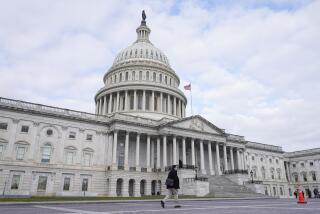Conferees Agree on $3.9-Billion Drought Aid Bill
- Share via
WASHINGTON — House and Senate conferees approved a $3.9-billion aid package for drought-stricken farmers Thursday night, including a three-month dairy price-support increase but limiting feed assistance to livestock producers.
“We have moved in record time, and we have developed a good, fair bill,” Senate Agriculture Committee Chairman Patrick J. Leahy (D-Vt.) said after the conference committee approved the compromise package.
Plans call for bringing the bill to the floor in both the House and Senate by next Wednesday at the latest, and most lawmakers believe that the election-year package will find overwhelming support in both chambers.
President Reagan is expected to sign the measure, whose $3.9-billion cost estimate is well below the $6-billion level, at which the measure would have had nasty budgetary repercussions.
Percentage of Crop Loss
Major provisions would pay farmers 65% of their usual incomes once losses exceeded 35% of normal yield. That feature already had been cemented when the conference committee went into session.
Farmers severely hurt by the drought would get even more. The bill would provide producers 90% of their usual incomes if crop losses exceed 75% of their usual harvests. That represented a compromise between the 95% level in the House version and the 85% level passed by the Senate.
House and Senate negotiators were unable to agree on much in sessions Thursday morning and early afternoon. Leahy and House Agriculture Committee Chairman E. (Kika) de la Garza (D-Tex.) finally went behind closed doors, joined by senior Republicans. They produced a compromise that was swiftly adopted when the conference committee met Thursday night.
They dropped a Senate-passed provision that would provide government feed assistance to farmers who do not ordinarily produce their own feed. Agriculture Secretary Richard E. Lyng said Wednesday that he would have trouble recommending the feature to President Reagan because the cost was $2 billion.
More to Read
Get the L.A. Times Politics newsletter
Deeply reported insights into legislation, politics and policy from Sacramento, Washington and beyond. In your inbox twice per week.
You may occasionally receive promotional content from the Los Angeles Times.










